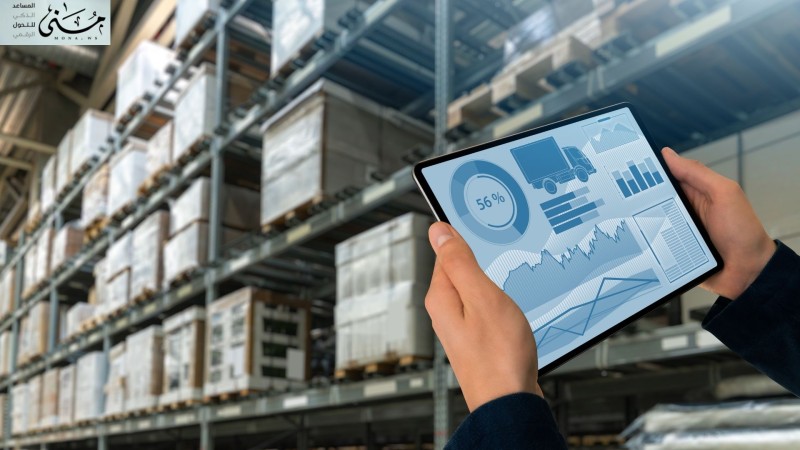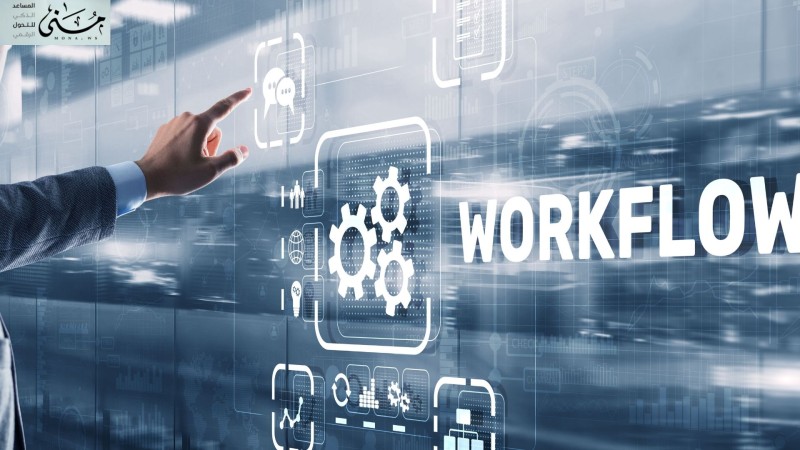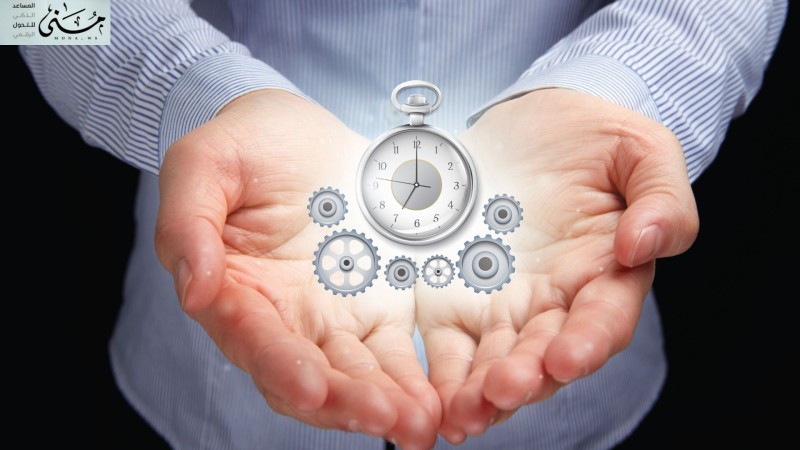In the modern business environment, managing administrative assets and handling technical reports is no longer practical. Integrating these two areas has become an institutional necessity to reduce breakdowns, improve service quality, and increase operational efficiency. Smart solutions enable this seamless integration, linking asset tracking, maintenance scheduling, and technical report processing into a single, unified system that improves organizational performance and increases decision-making accuracy.
In this article, we will learn about the importance of integration between administrative asset management and technical reporting management.
Why do organizations need to integrate asset management with technical reporting?
This integration contributes to improved coordination between departments, faster troubleshooting, and transparency in asset operational data. This connection ensures that every piece of information about an asset—from its history, location, use, and maintenance—is available in real-time in every technical report.
Asset management contributes to:
Speed of access to information
When submitting a technical report, the technician can find out all the details of the asset directly, without referring to other departments or manually searching.
Accurate fault tracking
The system allows you to see duplicate reports for the same asset, which helps you make a radical decision such as replacement or upgrade.
Raising the level of transparency
Every step taken on or in the processing of the asset is documented, reducing human error and increasing control.
What do institutions achieve from this integration?
By linking asset management with technical reporting, organizations achieve significant operational and administrative benefits that go beyond simply reducing disruptions or accelerating remediation, including:
Improving technical maintenance efficiency
Technical teams are able to handle faults based on documented data, facilitating accurate diagnosis and rapid resolution.
Extending the life of assets
By linking breakdowns and preventive maintenance to each asset, it becomes easier to anticipate breakdowns before they occur and implement proactive maintenance.
Make data-driven decisions
Management can analyze reports against assets and discover the most expensive or depreciating equipment, facilitating investment decisions.
How do systems efficiently support this integration?
Advanced solutions that unify asset management with maintenance and technical reporting systems, with user-friendly interfaces and accurate reports, support decision-makers, such as DocSuite, which:
Central management of all assets
The system records each asset with its information, location, and association with departments, making it easy to track and update.
Automatic linking between the original and the report
Once a technical report is logged, it is automatically linked to the asset and the maintenance and operational history is pulled, reducing response time.
Maintenance alerts and scheduling
The system can send periodic alerts to perform proactive maintenance before any failure occurs, preventing equipment downtime.
What is the difference between integrated and traditional organizations?
Organizations that integrate achieve more consistent and resilient performance than organizations that separate their departments or rely on paper.
traditional institutions
They rely on separate systems, which leads to data duplication, delayed response, and difficulty tracking performance.
Integrated institutions
Benefit from the flow of information between departments, facilitating performance analysis and making quick improvement decisions.
How does asset management contribute to reducing costs?
When assets are managed intelligently, it's no longer just about tracking devices but a tool for reducing waste and controlling spending.
Reducing emergency maintenance costs
With preventive maintenance, unexpected breakdowns that require additional time and resources are reduced.
Accurate inventory management
Knowing the number, condition, and location of devices reduces the purchase of what the organization does not actually need.
Utilizing assets for maximum operating life
Asset management helps extend the life of an asset, using it efficiently without excessive depreciation or misallocation.
How does integration improve the internal user experience?
When asset management data and technical reports are in one place, the internal user experience—whether a technician, maintenance officer, or even an administrative staff member—becomes smoother and more efficient. Integrating asset management and reports creates a smart digital environment that benefits everyone who uses the system.
Speed up technical reports
Instead of manually submitting requests and waiting, an employee can easily log a report, which will be automatically linked to the affected asset.
Reduce overlap between departments
Thanks to this integration, employees don't need to follow up on reports with more than one department, as the system automatically links departments through the asset management database.
Increase employee satisfaction
When an employee sees that their issue is being addressed quickly and transparently, they feel that the organization cares about their comfort and productivity.
How does asset management help improve environmental sustainability?
In the era of environmental responsibility, digital asset management plays a pivotal role in supporting sustainability strategies by reducing waste, enhancing efficiency, and controlling equipment lifecycles. It works to:
Reduce unnecessary replacement
Preventive maintenance extends the life of the asset, reducing equipment wear and tear.
Energy consumption analysis reports
Platforms such asDocSuite provides accurate reports on asset performance and depreciation, helping you make better environmental decisions.
Smart Device Disposal
By fully tracking the asset's lifecycle, an organization can determine the best time to dispose of or recycle devices sustainably.
Challenges facing institutions in the absence of this integration
When asset management and technical reporting are not linked, several problems arise that hinder work, increase operational costs, and affect quality. The most important challenges include:
Wasting time on manual formatting
Technicians waste valuable time searching for asset data or history, delaying processing.
inaccurate decisions
Without comprehensive data, management makes maintenance or replacement decisions based on inaccurate estimates.
Frequent faults
Lack of maintenance history or previous reports leads to recurring faults without knowing the root causes, which negatively impacts performance.
How does an organization begin implementing this integration?
Transitioning from a traditional system to a unified, intelligent system requires careful planning and technical investment, but it has a rapid impact on overall performance.
Current situation assessment
The current asset management situation must first be analyzed, and deficiencies and redundancies identified.
Select a systemSmart CMMS
A platform likeDocSuite enables instant and easy integration between asset management and reporting, supporting maintenance, inventory, and reporting in a single interface.
Staff training
The system's effectiveness cannot be achieved without enabling teams to use it efficiently, so technicians and administrators must be trained on the new platform.
What is the ROI of integrating asset management and technical reporting?
When an organization invests in effective integration between asset management and a technical reporting system, it isn't just spending money on a technical system; it's building an intelligent environment that transforms data into real value. The return on investment isn't measured solely by reducing downtime or accelerating reporting, but rather by improving overall performance and significantly saving costs.
Reducing emergency breakdowns
By tracking the asset's condition and automatically scheduling maintenance based on its history, unexpected breakdowns that impact business flow and are costly can be avoided.
Increase technician productivity
Integrating information eliminates the need for manual research, freeing up technicians to focus on actual tasks, thus increasing productivity and performance.
Reduce maintenance costs
By using accurate data about assets, decisions can be made based on numbers, such as preventive rather than corrective maintenance, which reduces spending.
Reduce downtime
Every minute a critical asset is down means a direct or indirect financial loss. With integration, these times are significantly reduced through rapid reporting.
Examples of successful use cases
Use of smart systems such asDocSuite provides a comprehensive solution for highly efficient asset management, from tracking to maintenance. This has led many organizations to rely on it as a model for improving operational and technical performance. Some of the most notable success stories include:
Education sector
Some universities use this system to track assets such as educational equipment, allowing for maintenance management before critical exam periods.
healthcare sector
In hospitals, integration between asset management and reporting is used to maintain critical medical devices, ensuring continuous readiness.
Government services sector
The implementation of digital platforms in ministries and municipalities has helped track public assets such as buildings and vehicles, receive reports about them immediately, and process them without delay..
Does your organization need this integration today? The simple answer is: Yes. If you're looking for a smart, efficient, and cost-effective organization, linking asset management with technical reporting management via a platform likeDocSuite is the solution. This type of integration not only enhances performance, but also builds upon it the future of management transformation and complete control over the enterprise asset lifecycle.
 تعرف على أهمية التكامل بين إدارة الأصول الإدارية وإدارة البلاغات الفنية عن قرب
تعرف على أهمية التكامل بين إدارة الأصول الإدارية وإدارة البلاغات الفنية عن قرب










Comments
Add New Comment